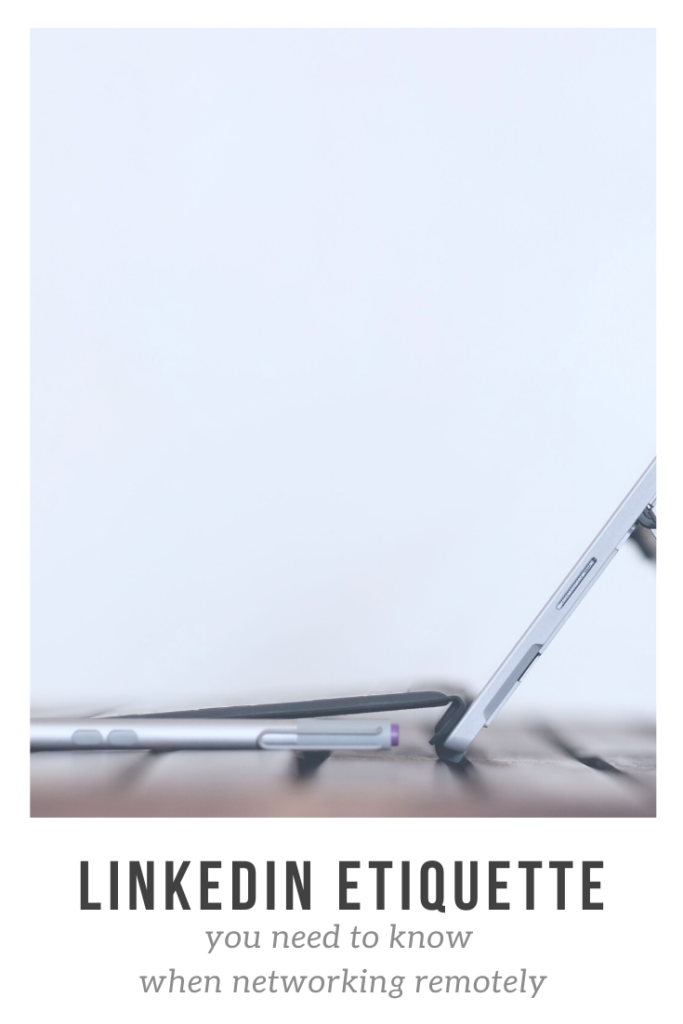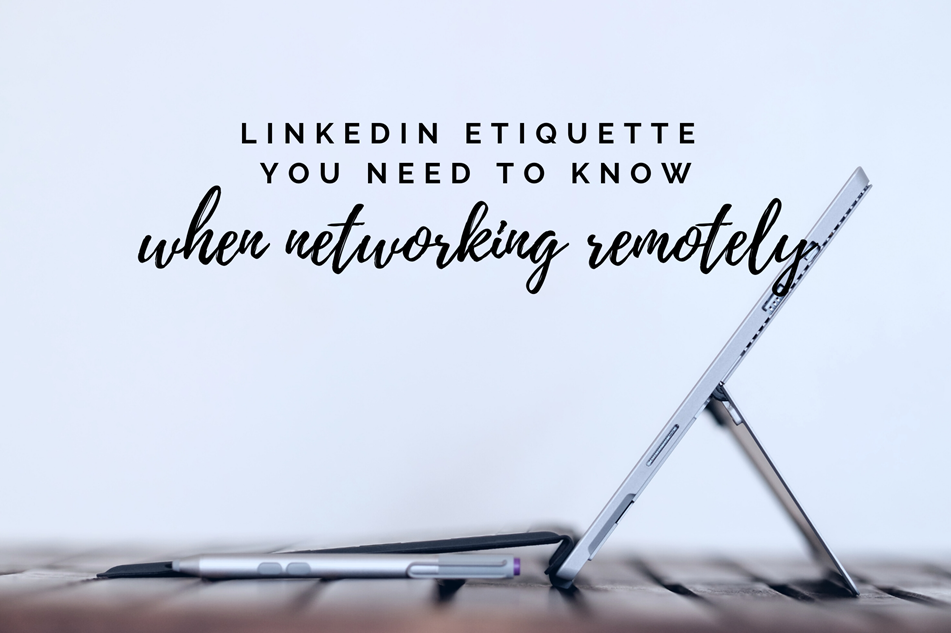|
|
Even as businesses and offices start to reopen, networking is likely to remain virtual through the fall. Which is why it’s important for you to know how to use LinkedIn effectively, using proper LinkedIn etiquette. This means doing more than just setting up or updating your profile and letting it sit there on the platform.
Most people only create a LinkedIn profile and then expect recruiters to magically start sending them invitations for interviews. Or, they try to cold-connect with someone on the platform they don’t know, and expect him or her to immediately accept their connection request.
This is not how LinkedIn works. First, there are many more things you can do with LinkedIn beyond creating a profile, which is something I spend time teaching my clients. They’re always amazed at the different things I show them because they had no idea the platform could do those things.
Second, there are more things you need to do to build your network on LinkedIn. But, there is an etiquette to it. If you fail to follow proper LinkedIn etiquette, you’ll likely turn off the people you want to connect with most.
LinkedIn etiquette basics
1. Put a face with your name
Before you connect with anyone or ask for an introduction, make sure your profile includes your photo. No one likes to receive a connection request from a faceless stranger.
Make sure it’s a clear picture of you looking professional. The photo doesn’t have to be a professional photo as long as it’s clear and you look professional in it.
2. Don’t go on a connection rampage
If you try to connect with too many people you don’t know at one time, you run the risk of them indicating they don’t know you. If enough people say they don’t know you, LinkedIn will “black ball” you from being able to connect with other people.
At this point, the only way you’re able to connect with anyone on LinkedIn is if you already have their email address. This restriction can last for months or even years.
Only connect with people you know, people you’ve been introduced to by a mutual connection, or people you’ve previously met in another setting.
3. Ask for an introduction
So how do you connect with new people on LinkedIn if you should only connect with people you already know?
LinkedIn used to have a “get introduced” feature which let you choose a mutual friend to request an introduction from, directly from the profile of the person you want to meet.
But, in typical LinkedIn fashion, they changed this functionality after everyone finally got used to the “get introduced” feature, and then of course made it slightly more cumbersome. (Thanks LinkedIn!)
Now, to get introduced, you have to ask your mutual contact to go to your profile, and have them select “share profile via message” from the “more” button.
You’ll probably have to follow up with your connection to make sure he or she has done what you’ve asked them to do.
Always ask a mutual connection you know well, someone you trust to complete the task. And don’t forget to thank them for doing so!
4. Include a personal note
When connecting with someone, always choose the option to include a personal note in your connection request. This is common courtesy, but most people fail to take this extra step.
Your note should be brief, such as reminding the person how you two met. And it should NEVER include anything about asking for a job or asking to “pick their brain“!
5. Don’t spam people
Once your connection request has been accepted, don’t spam your new connection’s LinkedIn inbox. Spamming is one of the biggest complaints people have about LinkedIn.
Make sure you’re private messages are personalized and sincere. Take the time to build a rapport before asking for anything in return. I teach more about this when I discuss informational interviews in my on-demand program, The Secret to Successful Networking.
6. Be a contributor and a resource
Be helpful by contributing and sharing information that’s of interest to the people you’re trying to attract to your profile. This is especially important to do within the various LinkedIn groups.
(You are joining LinkedIn groups, aren’t you???)
Understand the audience within each group, and share links to articles and other information specific to the interests of each group. Avoid posting anything unprofessional or anything irrelevant to the group’s focus.
Also, like, comment, and share other people’s posts within groups. They’ll be more likely to connect with you without an introduction if you show a genuine interest in what they’re posting.
Stay current
As you follow the unspoken rules of LinkedIn etiquette, remember to also pay attention to the frequent changes in LinkedIn’s functionality.
As I stated earlier, it’s typical for LinkedIn to change its functionality much more frequently than other social media platforms do. If you don’t go into LinkedIn and peruse the site on a regular basis, you can easily get lost or confused.
So, always stay current, and always mind your manners!
Related sources
- How to Make Your LinkedIn Profile Stand Out
- What Are the Best Alternatives to Online Job Boards?
- How to Be Realistic About Networking
- Why “Can I Pick Your Brain?” Is the Wrong Approach
- On-demand program, The Secret to Successful Networking: How To Do It Naturally and Effectively






